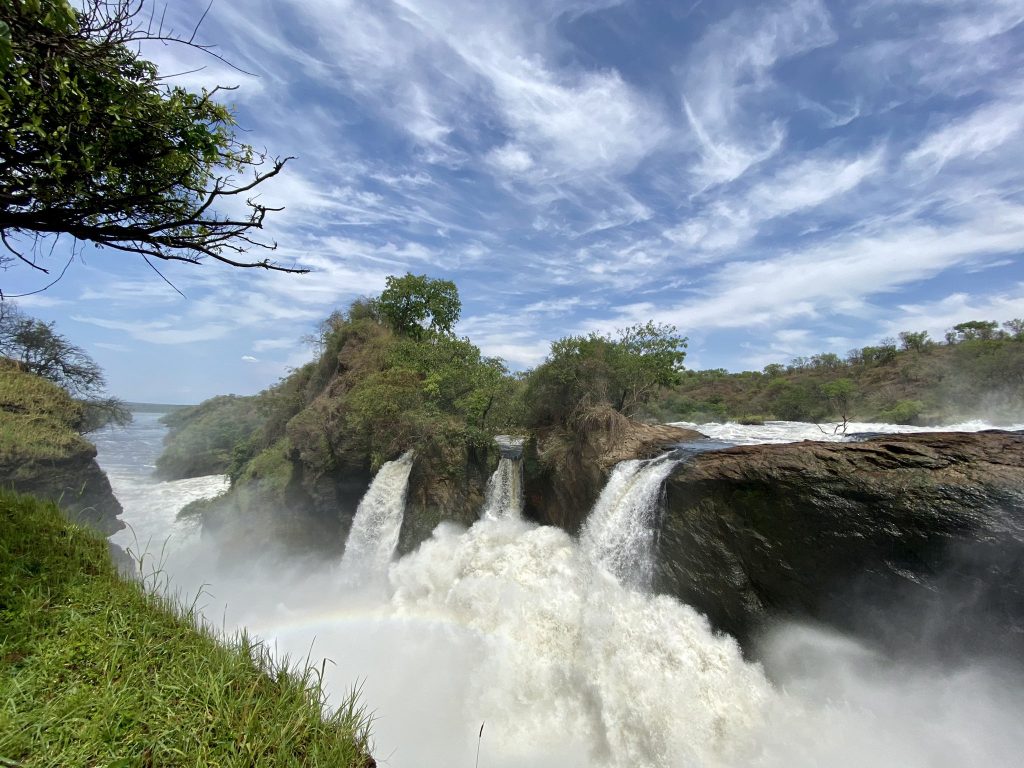For many years now, the Source of the River Nile has been one of the biggest tourist attractions in the Pearl of Africa, bringing thousands of visitors, mainly foreign, to see where the longest river in the world begins its journey. Jinja City, located slightly below 80kms (1-hour drive) from Uganda’s capital city Kampala, has for this reason grown to become a world-famous tourist destination.
With time, and owing to the growth of numbers of visitors to the country, many have explored the movement of the Nile further North as it makes its 6,650km journey to the Mediterranean sea, leaving Lake Victoria at Ripon Falls near Jinja, Uganda, as the Victoria Nile. It flows 130 kilometers north, to Lake Kyoga. Starting from the western shores of the lake, it flows at first to the west until just south of Masindi Port, and then turns north, making a great half circle to the east and north until Karuma Falls, the gateway to the northern Uganda. The Nile then flows westerly through the Murchison Falls until it reaches the very northern shores of Lake Albert on the border with the Democratic Republic of Congo where it forms a river delta. It is from Lake Albert, that the river continues north through Uganda and here is known as the Albert Nile.
The river then flows into South Sudan just south of Nimule, where it is known as the Bahr al Jabal (“Mountain River), making several confluences before entering Sudan just below Renk, then flowing north to Khartoum and meeting the Blue Nile. In the north of Sudan, the river enters Lake Nasser (known in Sudan as Lake Nubia), the larger part of which is in Egypt, and just below the Aswan High Dam, at the northern limit of Lake Nasser, the Nile resumes its historic course. North of Cairo, the Nile splits into two distributaries, Rosetta to the west and Damietta to the east, which both form the Nile Delta and feed the Mediterranean.
Back home in Uganda, the Nile makes a grand performance at the Murchison Falls, where it funnels through a narrow fissure in the Rift Escarpment to erupt out of the other side crashing into a 43 metres plume of white water. The sight as the river falls is made even more spectacular by the wildlife that has made home below the falls, forming the Murchison Falls Game Park, a home to profuse birdlife, thousands of hippos, and gigantic crocodiles.
At the heart of this magnificent scenery is the Chobe Safari experience, a 5-star safari lodge, that has been ranked by thousands of travel enthusiasts as one of Africa’s premier tourism destinations. It derives its name ‘Chobe’ from the Luo language and means a place without men. It was named so by widows from the area that lost their husbands to war or wild animals that roam the land.
The architectural design of the expansive luxurious Chobe Safari Lodge is such that a visitor has a full view of the river flowing and splendid flora and fauna. It has breath-taking panoramic views, magnificent sounds of rapids from the River Nile, and regular visits from wildlife. All the rooms and luxury tents have the balconies and terraces facing the sweeping view of the River Nile. At night, from their room balconies, tourists see the hippos come out of the river to camp where visitors sit during the day.

The national park boasts of hosting A-list international celebrities like Kim Kardashian and Kanye West who visited in 2019 and rented out the entire Chobe Safari Lodge. England’s Queen Elizabeth and the Queen Mother also visited Murchison Falls National Park in 1959. They stayed in the Queen’s Cottage at Paraa, and cruised upriver to view the falls. Former US President Theodore Roosevelt also visited Murchison Falls National Park in 1909 and collected wildlife specimens for the Smithsonian Institute. He took with him 4,900 mammals, 4,000 birds, 2000 reptiles and 500 specimens including five Northern White Rhino, eight Elephants, 10 Uganda Kobs and a Shoebill Stalk. Roosevelt wrote a detailed account of the trip in the book African Game Trails.